Probably, there are no gardeners who have never encountered pests on their site. And it is very unpleasant, having made so much effort to grow seedlings and care for them, to lose the entire crop due to insects. Fortunately, there are many effective pest control methods available today.
Seedlings of tomatoes can infect various pests. All of them are divided into two groups: root and aboveground. The first insects live in the ground and have a detrimental effect on the root system of plants, while others damage leaves and stems. If you start to act immediately, after seeing the first signs of damage to plants, then there is a high chance of defeating the enemy. Conversely, if pest control is delayed, then there will be nothing to save. Consider in this article what are tomato pestshow to protect plants, and how you can treat tomato seedlings from pests.
Colorado beetle
This pest is known to all gardeners without exception. Every year you have to save potatoes from him. But recently, the Colorado potato beetle does not disdain tomatoes. Perhaps the reason is that both potatoes and tomatoes are from the nightshade family.
This pest has a variegated striped color, and is very visible on green leaves. But the main threat is eggs, it is more difficult to find on plants. The insect lays them on the underside of the sheets. A large number of larvae are formed from them, which mercilessly eat the young leaves of plants. They can very quickly destroy tomato seedlings, so you need to start the fight immediately.
The easiest and most effective way to control these pests is to collect insects and eggs by hand. Tomatoes are usually affected by fewer beetles than potatoes, so picking as soon as the pests appear on the plants shouldn't take long. It will also keep tomato seedlings from being exposed to chemicals that are used to control the Colorado potato beetle. But if the volume of work is large, and the larvae have multiplied strongly on plants, then you will have to use special preparations. Many people prefer Aktara, Prestige, Mospilan.
For those who prefer folk remedies for pest control, there are also several options. For example, you can spread potato skins over the tomato garden. Since potatoes are a favorite delicacy of the Colorado beetles, it will crawl onto it, and it will be much easier to collect insects. You can also spray tomato seedlings with a special infusion made from wood ash.
Shaking vigorously can damage or break the tomato stem.
Whitefly
This is a flying insect that damages the plant by sticking to tomato leaves and absorbs juice from them. Whitefly tomato belongs to the most dangerous pests. It is capable of infecting many types of tomatoes (about two hundred varieties). Even the most resistant varieties can suffer from this pest.
Whitefly lays eggs on tomato leaves. The larvae that appear immediately begin to destroy the plants. Due to the loss of juice, the seedlings gradually begin to wilt and dry out. The reason for such disastrous consequences is in the soot fungus, which is carried by the whitefly. The fungus spreads over the leaves of the plant, and covers them with a bloom of black color.
If you notice black or silver bloom on the leaves of your tomatoes, then you need to start fighting the pest. The sooner you start processing plants, the more effective it will be. Getting rid of the whitefly can be a long process, but you can still save the tomato crop.
An excellent method of fighting whitefly is the drug Confidor. Use according to the instructions on the package. From folk methods, spraying tomato bushes with infusions of garlic or cinnamon is suitable. Insects do not like harsh odors and may leave your garden after treatment.
Medvedka
This insect is a relative of the locust. Therefore, it is not surprising why it is so gluttonous. The bear has well-developed forelimbs, which are very convenient for raking the soil. The body of the bear is brown or brown. The insect grows up to ten centimeters long. Bear larvae are no less dangerous for tomato seedlings. They, like adult insects, feed on plant roots.
Medvedka digs passages in the ground to move freely around the garden. She gnaws the roots of tomatoes, and can also completely gnaw the base of the stem, which is why the tomato seedlings wither and die before our eyes.
To combat this pest, granular preparations are used that act directly on insects without harming the plants. Such preparations must be buried in the soil or poured into the holes of the bear. The following products are suitable: Medvetox, Rembeck, Thunder and Grizzly. Many similar drugs can be found on store shelves.
Often, a solution of table vinegar is used to fight the bear. To prepare it, you need to mix:
- half a liter of 9% vinegar;
- ten liters of water.
The solution must be poured into the burrows. Medvedka does not tolerate such pungent odors, so this method will help drive the insect out of your garden for a long time. You can scare off the bear and other folk methods. For example, with the help of onions or onion skins, spoiled meat, garlic. To prevent others from feeling this smell, it is better to bury the product in the soil. To be sure that the bear will definitely not miss your repellant, you can make a bait. You can use rotted manure as a trap, and beer or sunflower oil as bait.
Spider mite
It belongs to the most dangerous pests of tomatoes. It can destroy the entire crop if you do not start fighting it in time. Spider mite infection occurs most often from the soil. It may already be infested with ticks, or it may contain infected plant debris. It is very dangerous to plant plants or flowers brought from the field next to tomatoes.
It is very easy to detect the presence of a spider mite. When inspecting the plants, you can see cobwebs, as well as white and yellow dots on the leaves. They appear due to punctures that ticks make, feeding on the sap of the leaves. Over time, the cobweb can cover the entire plant, but this should not be expected, but it is better to immediately start fighting the pest.
The drug "Karbofos" well exterminates the spider mite. It is diluted with water and used to spray tomatoes. Lovers of folk methods can use ordinary alcohol to combat spider mites. They are sprayed with all the leaves on the tomato bushes. The procedure must be repeated after a week. Such a remedy is very affordable and will not harm tomato seedlings. You can also use an infusion of garlic, dandelions or onions to spray plants.
Aphid
This small insect affects many plants and tomatoes as well. It infects leaves and stems of plants.There are more than one thousand species of aphids. All of them feed on plant sap, and at the same time infect them with various viral diseases. Aphids reproduce very quickly. The greatest probability of aphid damage falls on the month of June, then its number becomes as large as possible.
The first alarm signal when aphids appear is curling and deformation of the leaves. If this happens, you need to carefully examine the tomatoes for the presence of these small insects. It usually affects the upper parts of the plants, so it is not difficult to notice it.
To combat aphids, you can use both chemicals and folk remedies, which are safer. The following insecticides are well suited: Ratibor, Confidor, Proteus. These preparations should carry out a thorough treatment of the bushes.
An effective method would be to wash off insects from tomato seedlings with water from a hose. You can also use various infusions and decoctions for processing plants. For this, ordinary grass, tobacco and ash are suitable.
To prepare a herbal decoction to combat aphids, you will need:
- 1 liter of herb.
- 2 liters of boiling water.
- 40 grams of laundry soap.
Pour boiling water over the herb and cook for fifteen minutes. Strain the broth and add the grated laundry soap, mix. Further, the broth must be diluted with water, 10 liters of water will be needed for 1 liter of solution. This mixture should be sprayed on tomato bushes.
Conclusion
As we saw, it is possible and necessary to deal with pests of tomato seedlings. Although it is quite painstaking work, it is worth it. As a result, we will save our harvest, and the plants will remain as healthy and strong. The main thing in this business is not to hesitate, because insects reproduce very quickly and can destroy seedlings in a short time. But by listening to the advice in this article, you will undoubtedly win the fight against pests.
Testimonials
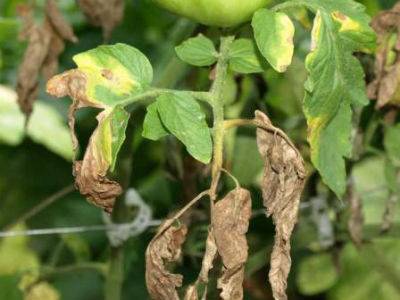
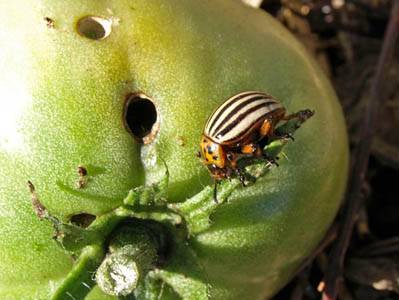

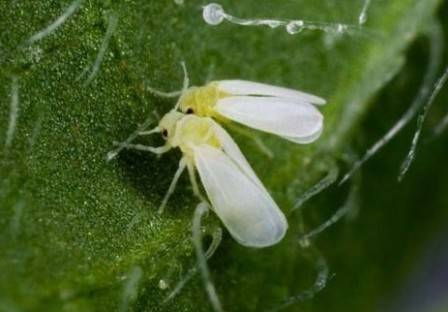
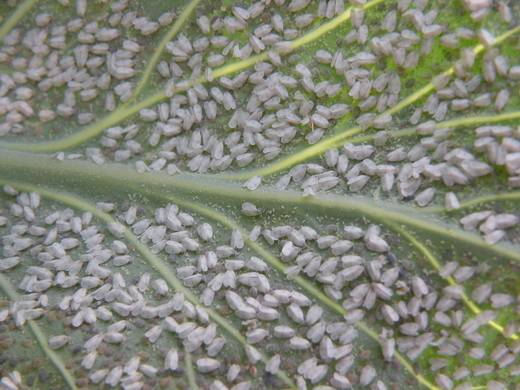
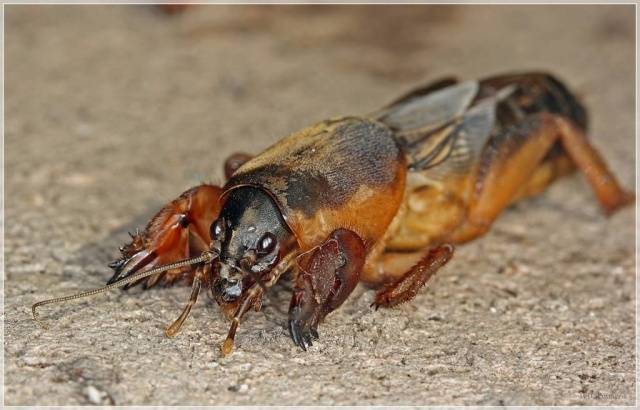

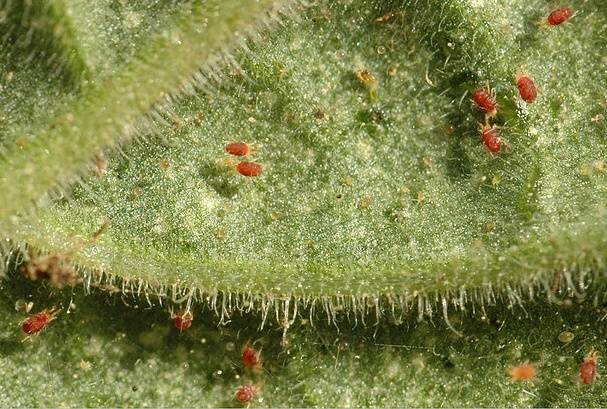












Someone nibbles and sucks around the seedlings of tomatoes and peppers at a depth of 1 cm from the surface of the earth. The seedlings in cups on the window, poured the earth from the glass, looked over, did not find any bear or scoops. Spilled the earth with boiling water with morgantsovka.